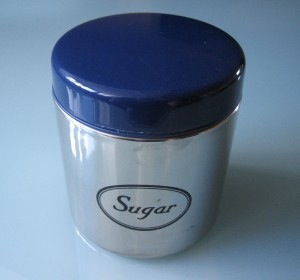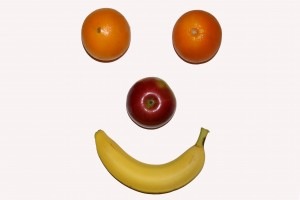 Chocolate bark at the receptionist’s desk. Candy canes at the dry cleaners. A rotating selection of Christmas cookies on just about everyone’s desk. Happy holiday food gifts from grateful clients. And that doesn’t include the fantastic spreads at holiday parties and family events!
Chocolate bark at the receptionist’s desk. Candy canes at the dry cleaners. A rotating selection of Christmas cookies on just about everyone’s desk. Happy holiday food gifts from grateful clients. And that doesn’t include the fantastic spreads at holiday parties and family events!
[Read more…] about A Holiday Eating Tip: Pick One Fantastic Treat
Manage Your Weight
How Much Do Americans Love Sugar? This Much: 475 Extra Calories A Day
The season of sugar plum fairies, ribbon candy, and sparkly cookies (and even fruit cake) is upon us. For about the past ten years we’ve been warned about watching how much sugar we’re eating and we still haven’t really listened.
According to the American Heart Association’s nutrition committee, Americans average 475 calories from added sugars every day. That’s a lot more than the recommended daily max of 100 calories (six teaspoons) from added sugars for women and 150 calories (nine teaspoons) for men. Think of it this way, that extra added 475 calories of sugar is the equivalent of 30 teaspoons a day.
A big problem with added sugars is that they both add calories and those “empty” calories displace the other nutritious foods.
Where Do Our Calories Come From?
Added sugars and solid fats account for about 35% of the calories in the average American’s diet. The recommended maximum is 5-15%.
About 36% of the added sugars come from sugary soft drinks — so cutting back on them is a good place to start trimming.
Natural vs. Added Sugars
Natural sugars are found in foods like milk and yogurt (lactose) and in fruit (fructose) as well as in many other foods. Because these sugars are found along with other healthy components in the foods, they’re considered okay.
Unfortunately, nutrition labels don’t differentiate between natural and added sugars. Look for any form of sugar in the food’s ingredient list.
Look for all forms (typical sugars end in –ose like lactose, glucose, fructose) including brown, raw, or invert sugar and/or “syrup” including corn, high fructose corn, and malt syrup. Also look for honey, molasses, agave nectar, evaporated cane juice, and fruit juice concentrate. Don’t be fooled by these. They sound healthy but are really just other forms of sugar.
.
Examples Of Foods With Added Sugar
A 16 ounce soda has about 11 teaspoons of added sugar. Although most of our extra added sugar comes from soda, sweetened beverages like fruit drinks, sports drinks, and teas; desserts; candy; and breakfast cereals all contribute.
Here are some examples of the added sugar in some common foods. This is just the added sugar, not the natural sugar that might also be in these foods.
- Cola, 8 oz. 22 grams
- Cranberry juice cocktail, 8 oz., 20 grams
- Chocolate Milk, reduced-fat, 8 oz., 14 grams
- Tea, instant, sugar-sweetened, 8 oz., 21 grams
- Applesauce, sweetened (1 cup), 16 grams
- Baked beans, canned (1 cup), 15 grams
- Oreo-type cookies (3), 12 grams
- Cranberries, dried (1/3 cup), 25 grams
- Fruit cocktail in syrup (1 cup), 26 grams
- Granola bar (1 oz), 12 grams
- Jellybeans, (1 oz, 10 large), 20 grams
- Popcorn, caramel-coated (1 oz), 15 grams
- Fruit yogurt (6 oz container), 19 grams
Is The Sugar In Fruit A “Diet” Buster?
Fructose: A Simple Sugar
Fruit sugar, or fructose, is a simple sugar that your body metabolizes quickly and easily. Fructose, has few, if any, advantages over sucrose, the kind of sugar in candy.
Moderate fruit intake is recommended as part of a healthy diet. The simple sugars, like fructose, found in fruit are not a problem for active and healthy people. But, if you have diabetes or prediabetes, too much fruit could throw your blood sugar levels out of whack.
Fruit juice is often made from fruit concentrate with added refined sugar, so too much fruit juice can be a bad thing. FYI: there really isn’t a big nutritional difference if your jam is sweetened with “sugar” or “fruit juice sweetener.” They are both sugar.
A Good Idea
Having fruit in your diet is a good idea for a bunch of reasons. It tastes good and most of it has a substantial amount of fiber — which helps to reduce the risk of some diseases. Fruit is also a good source of vitamins and minerals. A well rounded diet with plenty of fruit, vegetables, and some lean protein is a good bet.
It’s also pretty cool that a lot of fruit comes in it’s own wrapper and single serving package. Think oranges, clementines, tangerines, apples, pears, and bananas to name a few. They’re really grab and go. And berries – so high in antioxidants. Delicious, too. Watermelon is 92% water by weight, filled with vitamin C, and a necessary part of so many barbecues and beach parties.
All sugar adds calories but there are certainly a lot of reasons to choose fruit and its sugar over the nutritionally empty sugared sweet stuff like candy and soda.
The fiber and water in fruit help you to feel full. The fruit is packed with vitamins and minerals. Because of its fiber, fruit takes longer to digest than processed sweets made with refined sugar. And, it doesn’t create a spike in your blood sugar — which is then followed by a steep drop that makes you hungry all over again.
Sugar And Calories In Popular Fruit
Some examples:
|
Holiday Baking With Less Sugar And Butter — Really!!!
It’s Christmas Cookie Time
In my family holiday season means, among other things, baking. Lots of cookies: spritz, rolled, ginger bread men, meringues, Greek powdered sugar cookies; a savory carrot bread; poppy seed bread; and whatever dessert sounds good. No fruit cake, though.
If I ever added up the butter and sugar calories in all of these baked delights, the number would be so staggering it would absolutely spoil the deliciousness.
I’ve been doing some research on lower calorie substitutions for the ingredients in baked goods. Some I’ve tried and some I haven’t.
I’ve been decreasing the fat and sugar in the things I bake since this summer and in most cases have had a good deal of success. I find that decreasing the amount of sugar by a third doesn’t even really affect the taste. I’m working up to decreasing by a half. The true test will be the spritz cookies!
Some Baking Substitutions To Try
- Use ¼ cup of applesauce and ¼ cup of vegetable oil or butter instead of a half cup of oil or butter – OR — replace half the butter or oil with unsweetened applesauce, pureed pumpkin, or mashed bananas
- Use 2 egg whites or ¼ cup egg substitute for one egg; use 3 egg whites and 1 egg yolk for 2 whole eggs
- Decrease the amount of sugar in your recipe by up to a half and add ginger, lemon zest, cinnamon, or cloves
- Substitute nonfat sweetened condensed milk for sweetened condensed milk
- Substitute evaporated skim milk for evaporated milk
- Instead of sour cream use nonfat or low fat sour cream; pureed low-fat cottage cheese; or low or nonfat Greek yogurt
- Substitute low or nonfat cream cheese for cream cheese
- Substitute non-fat, 1%, or 2% milk for whole milk and half and half for cream
- Substitute 1/2 cup mini chocolate chips, chopped dried fruit, or chopped nuts for 1 cup of chocolate chips
- Swap 3 tablespoons of cocoa powder plus 1 tablespoon of oil or water for one ounce of baking chocolate
- For frosting use sliced fresh fruit with a dusting of powdered sugar; sweetened and flavored (vanilla, peppermint) nonfat cream cheese; or nonfat whipping cream
- Use whole wheat flour or ground flax for up to half of your recipe’s white flour. Regular whole wheat flour will make baked goods heavier and denser. Try using white whole wheat four that is higher in fiber and nutrients than refined flour but is lighter than regular whole wheat flour.
Dinner Plates: Size Matters!

Plates: Bigger Isn’t Better
The size of our dinner plates might be contributing to our country’s obesity problem.
Since 1960, the surface area of our average dinner plate has increased 36%. Today, the average dinner plate measures 11 to 12 inches across, but a few decades ago they were 7 to 9 inches. By comparison, a European plate averages 9 inches and some of our restaurants use plates that are about 13 inches across.
Supersized Eating
Just as serving sizes in restaurants have been supersized and package sizes in the market have grown, so have the plate, bowl, and glass sizes we use in our homes — by 36% in some cases.
Our ideas about portion sizes and how much we need to eat and drink to feel full have grown along with the size of our dishware.
Six ounces of cooked rice with a little chili looks like a good portion on an 8 inch plate. The same amount on a 12 inch plate would look paltry and probably cause the typical person to add more rice to the plate — which ends up increasing the portion size and calories.
What To Do
The fact of the matter is that we eat most of what’s on our plate regardless of the size of the plate.
But, when you switch to a smaller plate you eat a smaller serving. According to research done at Cornell, when you switch from a 12 inch plate to a 10 inch plate you eat 22% less.
So, you can control your portion sizes by downsizing the size of your plate. You can switch from a dinner plate to a salad plate or search vintage stores for older plates that are smaller in size.
Go Small – But Not Too Small
It sounds too good to be true, but using smaller dishes can also help you feel full even when you’re eating less. Amazingly, studies show that people are more satisfied with less food when they are served on 8 inch salad plates instead of on 12 inch dinner plates.
Use smaller plates and bowls. It’ll keep the portions smaller and you feeling fuller.
But — be careful not to go too small with your plate. With too little food you might end up going back for seconds. A plate 2 inches smaller than the one you normally use is probably about right.


